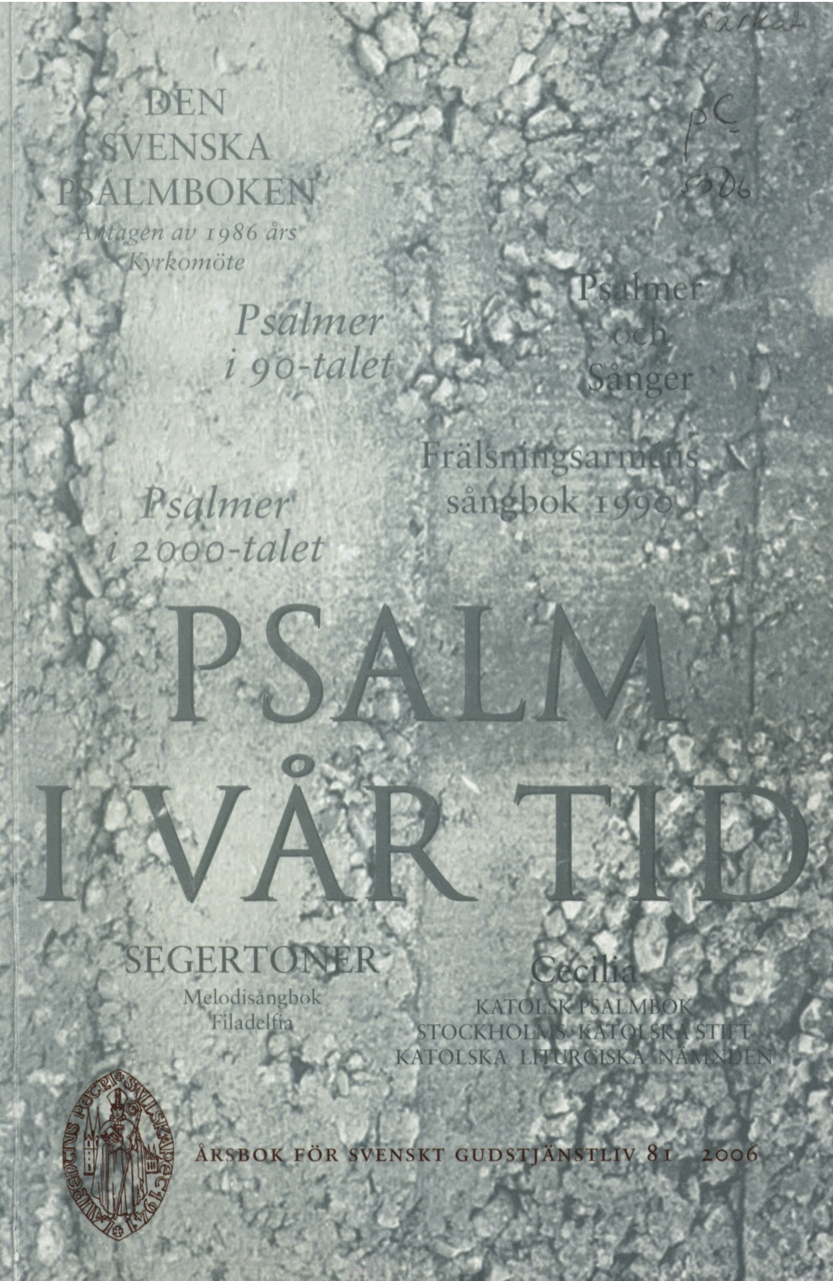Psalmbok i handen eller textbild på väggen?
Abstract
In 1987 nine Free Churches published a common hymnal, Psalmer och sånger. The 325 first hymns in this hymnal are the same as in Segertoner, 1989 (Hymns of Triumph) the hymnal of the Swedish Pentecostal Movement, and Frälsningsarméns sångbok (The Salvation Army's Hymnal) 1990, Den svenska psalmboken, 1986 (The Hymnal of the Church of Sweden) and Cecilia, 1987, the hymnal of the Catholic Church in Sweden. The common first part of all these hymnals was the result of ecumenical work. The second part of the hymnals is particular to each hymnal, mirroring the tradition of the different churches. My project was to discover how the three Free Church hymnals, Psalmer och sånger, Segertoner and Frälsningsarméns sångbok, are used today. Are they sufficient for what congregations need for their hymns? According to my tentative inquiry in 2005, the first common part of the hymnals is used as much as the second part. This means that the ecumenical goal has been achieved. For the most part, the most common hymns today have their provenance in Free Churches and were written between 1800 and 1950. Even hymns written or translated after 1950 are very much used, while older hymns, written before 1800, are not sung very often. The need for new hymns had been noted already by the beginning of the 1990s and in 2003 a supplement to Psalmer och sånger was published. However, many congregations have not yet bought the supplement, and it is difficult to say if it will be sufficient as a complement to the hymnal. The hymnal, including the supplement, works best for old and middle-aged people.
One can say that the importance of a hymnal has been reduced and hymns and spiritual songs from other sources are used, not least a new type of simple, repetitive songs of praise known as »praise songs.» These are so easy to learn that no hymnal is needed. More and more congregations project the hymn texts on a screen, so they do not need to provide hymnals for their members. Some congregations store hymns in a computer and produce a hymnal of their own, which can always be revised and enlarged, and always be up to date. I do not, however, believe that electronic hymnals will replace printed ones - electronic books do not seem to be replacing the printed book or newspaper. The need for new hymns, however, arises more quickly in our time, and an electronic complement to our hymnals is perhaps a conceivable solution that will make it possible to take advantage of contemporary hymns and meet the need for continuous renewal.
Downloads
Published
Issue
Section
License
© the authors, Laurentius Petri Sällskapet för Svenskt Gudstjänstliv and Artos & Norma Bokförlag. Copying and using material from Svenskt Gudstjänstliv for scholarly purposes is permitted as long as the source is indicated. For other uses, please contact the respective author as well as the publisher. Special restrictions may apply to images.


